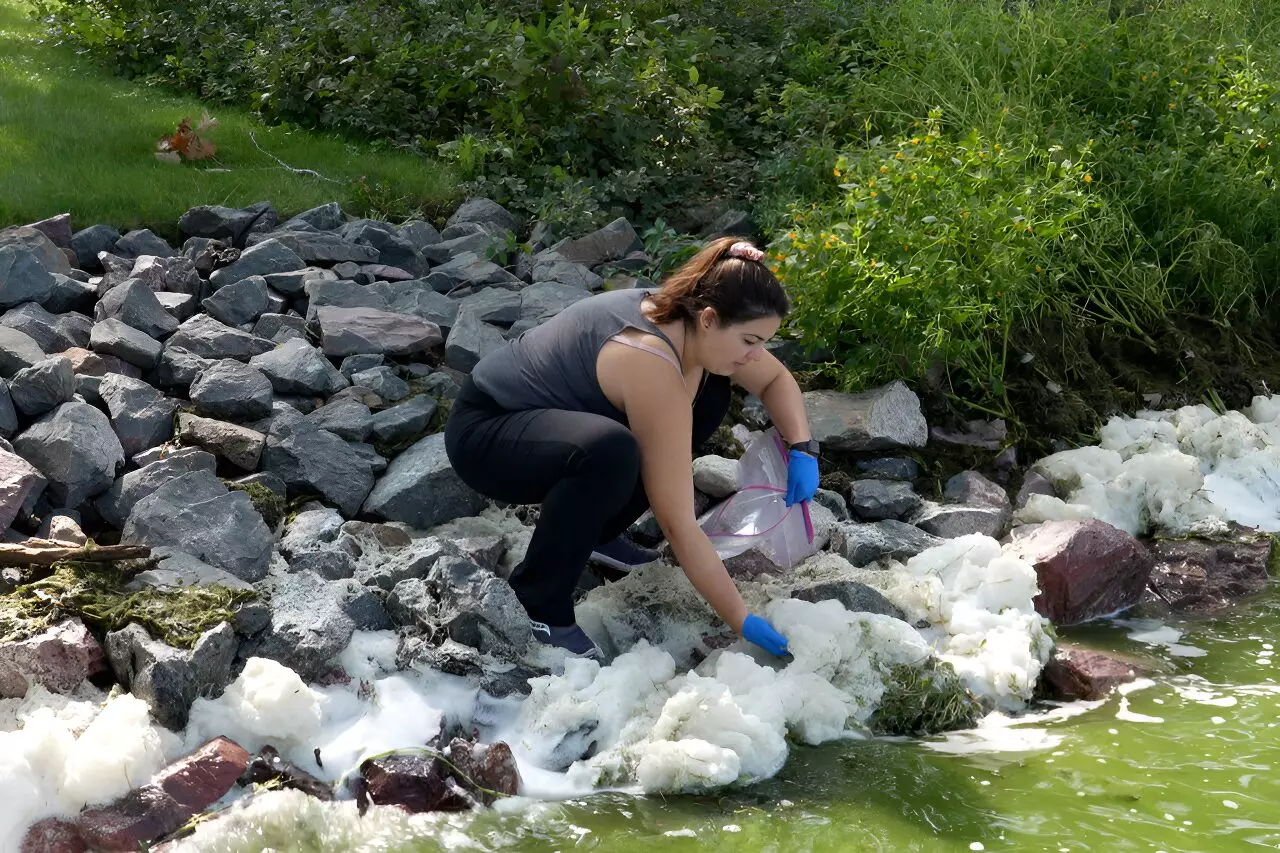In a world increasingly aware of environmental hazards, a recent study conducted in Wisconsin on rivers and lakes has unveiled unsettling findings regarding per- and polyfluoroalkyl substances (PFAS). Dubbed “forever chemicals” due to their persistence in the environment and the human body, these compounds are drawing dramatic attention as they infiltrate vital water sources. The findings reveal that foams naturally present on the surface of these water bodies harbor PFAS concentrations that surpass those found beneath the surface, raising dire concerns regarding both public health and ecological stability.
The study, which is documented in the esteemed journal Environmental Science & Technology, involved an extensive analysis of samples from 43 lakes and rivers. Researchers identified 36 different PFAS compounds residing in the foams, calling into question the safety of natural recreational areas. This research pushes us to reconsider our understanding of water quality and environmental safety, particularly in regions known for outdoor activities.
The Power of The Foam
Foams, often mistaken as benign natural substances, have been exposed as significant reservoirs of contamination. While they may appear harmless along shorelines, these frothy formations are betraying us with high concentrations of PFAS that are concerningly higher than the water below. Christy Remucal, a professor with the University of Wisconsin–Madison, emphasized the importance of refraining from contact with these foams. “While not everyone will experience direct ingestion, there’s a palpable risk of exposure, especially for children,” she warns. This revelation strikes a chord concerning child safety during summer activities along the water’s edge—a topic that should ignite an urgency in both parental awareness and public policy.
The findings resonate eerily with regulatory concerns, especially as the study revealed PFOS (a key PFAS component) in foam at concentrations nearing a staggering 300,000 nanograms per liter. To put this figure into frightening perspective, the federal regulation for safe drinking water is a mere 4 nanograms per liter. The incongruence between these levels makes an unequivocal case for stricter monitoring and public health advisories.
Health Hazards and Environmental Repercussions
The study corroborates longstanding warnings issued by the Wisconsin Department of Natural Resources with regards to the dangers of PFAS. Echoed across state lines, similar warnings in Michigan and even far-reaching cautions in the Netherlands illustrate a larger, global concern about contaminated water sources. As temperatures rise and outdoor activities beckon enthusiasts to engage with natural water bodies, the heightened risks cannot be overstated. Families with pets and children are particularly vulnerable when foams come into play, raising critical questions about safe recreational practices in natural settings.
Moreover, the environmental repercussions of PFAS are alarmingly dire. These chemicals, long used for their grease- and stain-resistant properties, are omnipresent in firefighting foams, household products, and industrial chemicals, leading to a pervasive contamination issue. This study spotlights the urgent need for systemic change, urging a reevaluation of how various uses of these materials are regulated and the industrial practices that allow for their wide proliferation.
The Role of Community in Environmental Research
Integral to the study’s findings was the participation of local citizen volunteers, alongside researchers from the University of Wisconsin–Madison. The community’s involvement demonstrates the crucial role that local awareness and advocacy play in scientific research. As foams can be transient—disappearing as quickly as they form—alerting researchers to their presence allows for timely sampling and analysis.
Local engagement not only reinforces the importance of environmental stewardship but also emphasizes the need for sound public policy that reacts to such community-driven discoveries. As citizens begin to understand the implications of their natural surroundings more profoundly, they gain both the mandate and the capacity to effect positive change in their ecosystems. This synergy between academia and the public possesses the potential to drive sustainable environmental practices and align scientific inquiry with community needs.
A Call for Action
With the evidence laid bare, the responsibility falls squarely on regulators, researchers, and the community alike to take decisive action against the PFAS menace. As the specter of contamination looms large over the idyllic landscapes of Wisconsin, proactive measures must be taken to protect public health and preserve the integrity of these vital water resources. This study serves as a clarion call, urging vigilance and accountability in the face of environmental challenges that threaten our water supplies and, by extension, our health and well-being. As the understanding of these complex contaminants deepens, let us advocate for cleaner, safer waters for generations to come.

